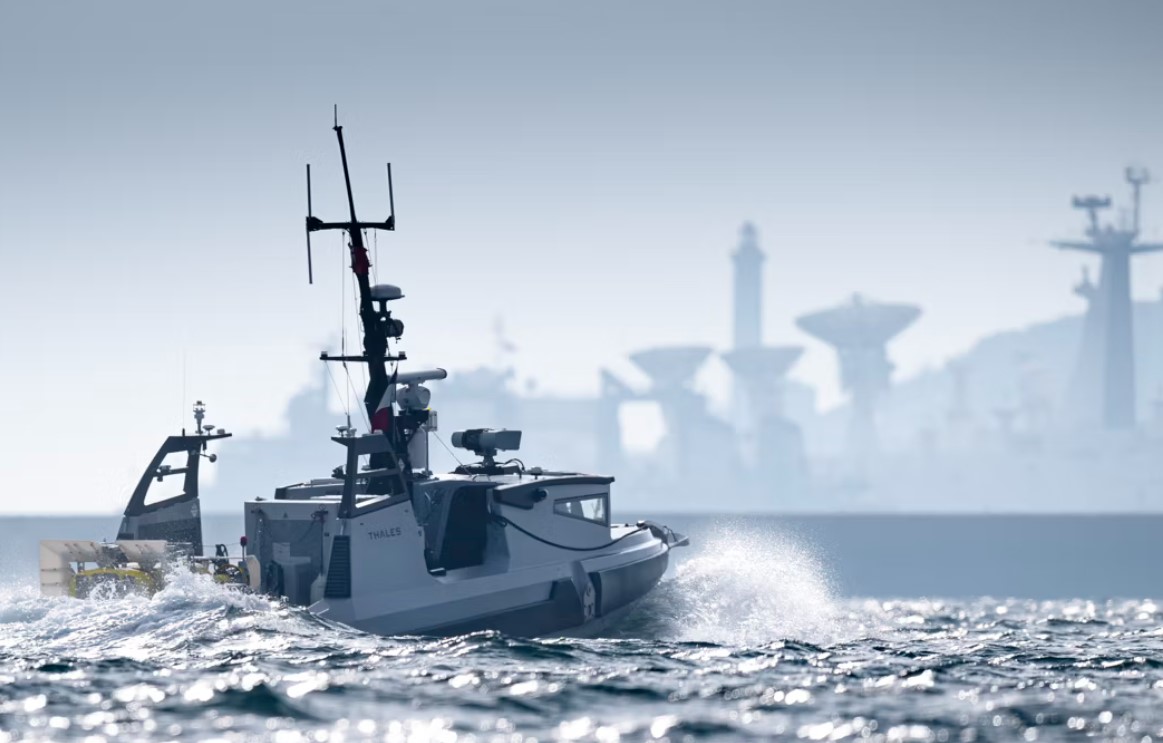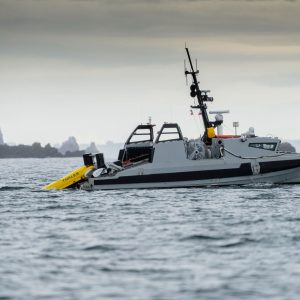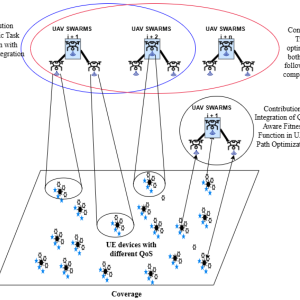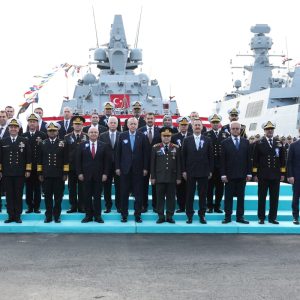The U.S. Navy has started at‑sea trials of USV autonomous launch & recovery (ALR) using Sealartec’s system on the JPEM Stiletto testbed. This is a practical step toward distributed, crew‑light operations at sea. As a result, ships can handle small boats and USVs faster, with less risk and fewer people on deck.
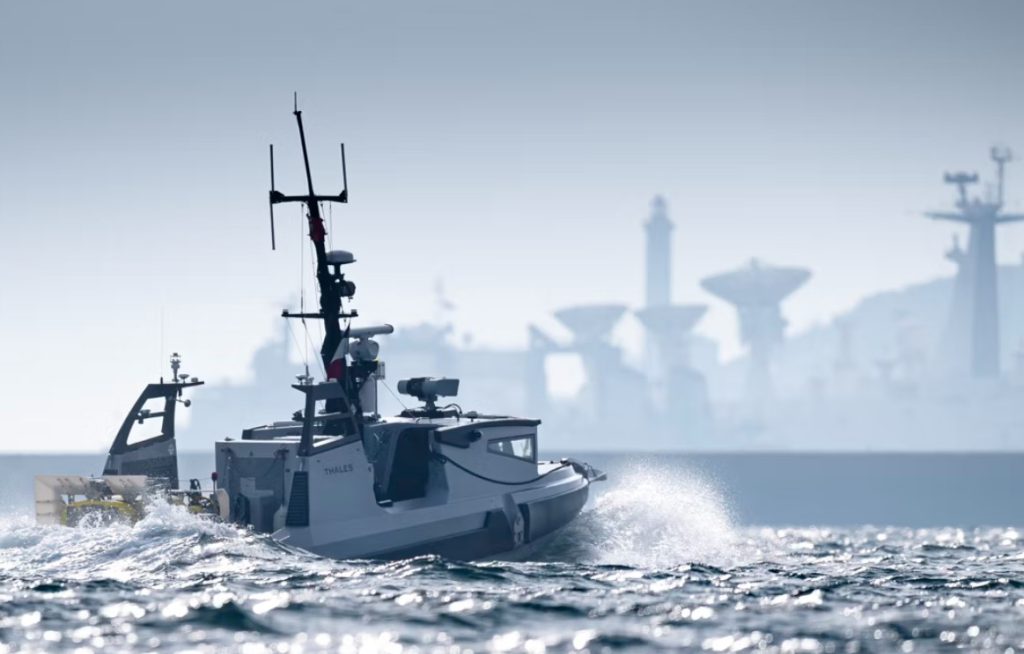
Why it matters
Autonomously sending out and bringing back unmanned surface vessels from a moving ship—without a deck crew—has been a long‑standing bottleneck. However, ALR removes cranes and slings from the danger zone, improves safety, and shortens timelines. Consequently, forward ships can act as hubs for dispersed unmanned teams in distributed maritime operations (DMO) and manned‑unmanned teaming.
Key Facts
| Item | Detail |
|---|---|
| Test program | U.S. Navy (NSWC Carderock) used JPEM Stiletto to trial Sealartec’s ALR on June 2, 2025. [1][2] |
| Technology firm | Sealartec — Israeli company focused on autonomous maritime launch/recovery and robotics. [1][2] |
| Platform used | The Stiletto technology testbed launched and recovered small boats/USVs at Norfolk, VA. [2][3] |
| Demonstration status | Early proof‑of‑concept; evaluation is ongoing, not a fleet‑wide deployment yet. [1][2] |
| Strategic relevance | ALR lowers shipboard manpower needs and enables hub‑and‑spoke USV operations across DMO constructs. |
Context → a quiet breakthrough
Unmanned surface vessels are moving from experiments to real missions: intelligence, anti‑submarine screening, mine countermeasures, communications relay, and deception. Yet launch and recovery have limited tempo and raised risk. In June 2025 the Navy showed a USV could autonomously find, align, and dock with a moving host using Sealartec’s capture system and guidance stack. Coverage in mainstream media was limited; nevertheless, the NAVSEA/Carderock note and DVIDS images confirm the event and location. [1][2][3]
This kind of progress matters because USV plans fail without reliable return‑to‑ship. Put simply, ALR is the plumbing that keeps the whole idea running. With it, crews spend less time in heavy seas wrestling with lines; with it, commanders can cycle more sorties in the same window; with it, dispersed groups can operate beyond the pier.
Technical and operational implications
Precision docking while both hulls move. The USV must approach a host that surges, sways, and heaves. Therefore, the vehicle needs robust sensing (vision, LiDAR, radar), precise relative navigation (RTK‑GNSS, UWB, visual‑inertial odometry), and control laws that can reject wave‑driven disturbances. Recent research in GNSS‑denied navigation and active‑disturbance rejection shows how to build the needed redundancy. [4][5]
Safe capture and well geometry. The shipboard interface—stern ramp, moonpool, or cradle—has to accept an autonomous craft without a boatswain on the line. As a result, capture tolerances, energy absorption, and water‑flow inside the well become design drivers. Modular ramp kits that bolt into existing sterns can speed retrofits.
Interfaces and modularity. A practical path forward includes standard latch points, power/data umbilicals for fast charging and offload, and a shared “state machine” for approach → capture → secure → service. In turn, USV autonomous launch & recovery becomes plug‑and‑play across hulls and vendors.
Autonomy handoff and fail‑safes. Handover from transit to docking autonomy needs clear abort ladders. For example, if a sensor blinds, the system should degrade gracefully to a backup mode and push the craft to safe loiter. Moreover, human override must remain simple and reliable.
Sea‑state envelope and robustness. Early demos live mostly in sea states 1–2. Over time, programs must expand to mid‑range seas, night operations, and multi‑vehicle cycles. Only then does ALR meet fleet needs.
Procurement and fleet design vectors
Incremental adoption. Near‑term use will start in benign waters with small USVs from motherships configured as tenders. Later, as confidence grows, ALR will move into rougher seas and more complex missions.
Retrofit vs. new‑build. Retrofitting LPDs, destroyers, auxiliaries, and Coast Guard cutters with ALR kits offers speed and cost control. Meanwhile, new‑builds can bake in moonpools and robotics trunks—similar to mission bays on Type 26/31 or USN LCS concepts.
Contracting opportunities. Beyond Sealartec, expect roles for sensing, sensor‑fusion, and control specialists; ship integrators who can re‑engineer stern ramps and wells; and battery/charging vendors who can close the turn‑time loop. Early experience at sea will be a key discriminator.
Standardization and interoperability. NATO‑style interface profiles will emerge for mechanical couplers, health/status messages, and autonomy states. Consequently, standards will shape who can sell into which fleet.
Operational impact. With reliable USV autonomous launch & recovery, a single host can cycle several vehicles, treat pop‑up tasks as routine, and keep humans out of the bight. It also enables “mother‑unmanned” ideas where a larger USV deploys smaller craft and the crewed ship stays over‑the‑horizon.
Risks and alternatives
Mechanical or docking failure. Misalignment, jammed latches, and hull strikes remain early hazards. Fault trees and soft‑capture mechanisms reduce risk, yet only hours at sea will build confidence.
Sea‑state limits. If the envelope remains narrow, utility narrows to fair‑weather missions. Therefore, programs should publish and expand limits as testing matures.
Integration complexity. Legacy ships vary widely. Power routing, structural reinforcement, and EMI/EMC can stretch schedules.
Alternatives. Human‑assisted cranes and tethers will persist for some fleets. Likewise, some will shift complexity to unmanned motherships, which still rely on ALR but move the challenge off crewed hulls.
What’s next
For USV builders: design ALR‑ready vehicles now—add latch points, relative‑nav aids, and software hooks.
For shipyards: prototype modular stern‑ramp kits with integrated charge/offload.
Program offices: issue interim interface profiles to speed trials before full standards. In the near term, expect ALR to appear at major exercises and to become a gate in future USV solicitations.
“The Stiletto program provides a unique, cost‑effective way to deliver combat systems faster,” NAVSEA noted. Pairing that tempo with dependable ALR can turn prototypes into routines. [2]
Internal link
Read our related analysis on Naval autonomy & distributed maritime operations (Defence Agenda) for doctrine and fleet‑design implications. (Internal)
External link
For industry reporting, see Defense Daily’s coverage and the official NAVSEA/Carderock release with imagery. (External)
Further Reading
- Defence Agenda — Unmanned systems procurement & integration (news)
- Defence Agenda — Naval autonomy & distributed maritime operations (analysis)
- Defense Daily — “Navy Tests New Autonomous Launching And Recovery of Small Boats, USVs” (Sept. 17, 2025)
- NAVSEA — “Stiletto, A Platform for Maritime Innovation” (Sept. 16, 2025)
- DVIDS — Stiletto autonomous launch & recovery image set (June 2, 2025)
- arXiv — GNSS‑denied USV navigation and ADRC‑based control studies (2025)
References
[1] Defense Daily — “Navy Tests New Autonomous Launching And Recovery of Small Boats, USVs” (Sep 17, 2025). Link
[2] NAVSEA (U.S. Navy) — “Stiletto, A Platform for Maritime Innovation” (Sep 16, 2025). Link
[3] DVIDS — “Stiletto Autonomous Boat Launch & Recovery” (Imagery, June 2, 2025). Link
[4] arXiv — “Design and Experimental Validation of an Autonomous USV for Sensor Fusion‑Based Navigation in GNSS‑Denied Environments” (Mar 30, 2025). Link
[5] arXiv — “Active Disturbance Rejection Control for Trajectory Tracking of a Seagoing USV” (Jun 26, 2025). Link
Tags: USV autonomous launch & recovery, ALR, naval autonomy, maritime unmanned, distributed maritime operations

